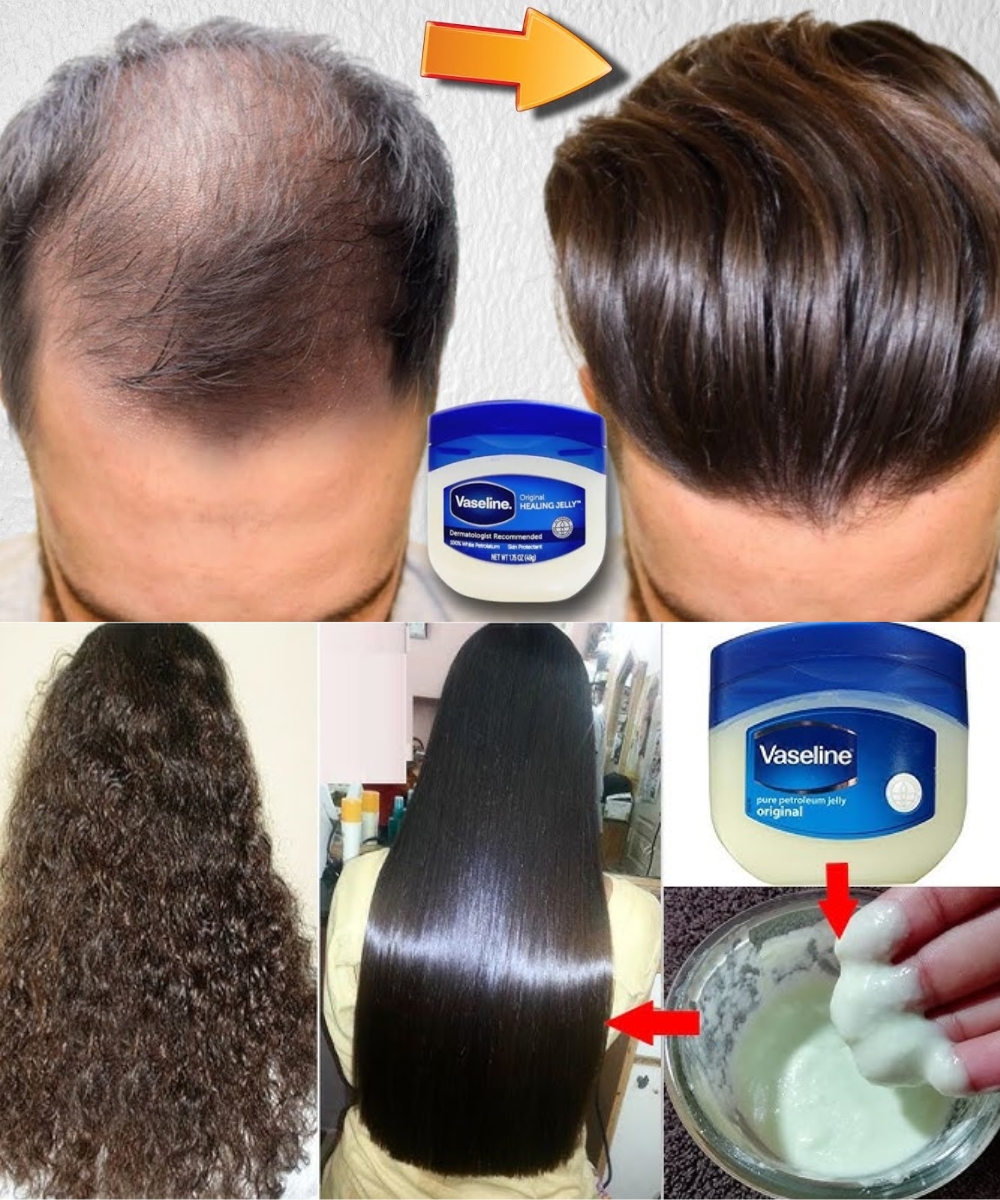ADVERTISEMENT
### Benefits of Using Vaseline on Your Hair
1. **Hydration and Moisture Retention**: Vaseline’s occlusive nature helps lock in moisture, especially for dry or damaged hair. This can make your hair appear shinier and healthier, and may reduce split ends.
2. **Frizz Control**: The thickness of Vaseline can tame frizz and flyaways, leaving you with smoother, sleeker hair.
3. **Adds Volume**: Vaseline can give the illusion of thicker hair by weighing it down slightly and smoothing it out, which can be particularly beneficial for those with fine or limp hair.
4. **Shiny and Glossy Hair**: When used sparingly, Vaseline can give your hair a shiny and glossy finish, making it look healthy and vibrant.
—
### Risks and Precautions When Using Vaseline on Your Hair
While there are some potential benefits to using Vaseline on your hair, there are also several risks and drawbacks that you should consider before trying this beauty hack.
#### 1. **Difficult to Wash Out**
The biggest challenge when using Vaseline on your hair is that it is notoriously difficult to remove. Its heavy, greasy texture can leave residue behind, even after several washes. You may need to use a clarifying shampoo or a combination of regular shampoo and dish soap to completely remove the product.
#### 2. **Scalp Build-Up**
Applying Vaseline to the scalp can lead to clogged pores and excess oil buildup, which can result in dandruff, scalp irritation, or even hair loss over time. It’s best to avoid applying Vaseline directly to the scalp or to limit its use to the hair ends.
#### 3. **Overuse Can Weigh Down Hair**
If you apply too much Vaseline or leave it in your hair for too long, it can cause your hair to feel greasy and weighed down. While some people may find this look appealing, others may struggle with the heaviness and lack of movement in their hair.
#### 4. **Messy Application**
Vaseline is a very greasy substance, so it can be tricky to apply without making a mess. If you accidentally get it on your clothes or furniture, it can be difficult to clean up.
#### 5. **Possible Allergic Reactions**
While rare, some people may have an allergic reaction to petroleum jelly. It’s always a good idea to patch-test Vaseline on a small area of your skin before applying it to your hair to check for any adverse reactions.
—
### Alternatives to Using Vaseline on Hair
If you’re interested in the benefits of Vaseline but are concerned about the difficulty of removal or other risks, there are several alternative ingredients you can use to nourish and hydrate your hair without the mess:
1. **Coconut Oil**: Known for its deep conditioning properties, coconut oil is an excellent alternative to Vaseline. It helps with moisture retention, adds shine, and promotes healthy hair growth without being difficult to wash out.
2. **Argan Oil**: Argan oil is a lightweight oil that hydrates, smooths, and nourishes hair without leaving it greasy. It’s rich in essential fatty acids and antioxidants, making it a great choice for promoting healthy, shiny hair.
3. **Olive Oil**: Olive oil is another natural alternative that helps to moisturize and soften hair. It’s less greasy than Vaseline and is easier to remove.
4. **Shea Butter**: Shea butter is a thick, creamy substance that helps hydrate and repair dry hair. It can be used as a deep conditioning treatment and provides many of the same benefits as Vaseline, but with fewer risks.
—
### Conclusion
The idea of applying Vaseline to your hair for longer, thicker strands may sound tempting, but it’s important to weigh the potential benefits against the risks. While Vaseline can help moisturize hair, tame frizz, and add volume, it can also be incredibly difficult to remove, especially from the scalp. If you do decide to give it a try, be sure to use it sparingly and focus on the ends of your hair rather than the roots.
If you’re concerned about the challenges of using Vaseline, there are plenty of natural alternatives, like coconut oil, argan oil, and shea butter, that can deliver similar results without the risk of build-up. Ultimately, the key to achieving long, thick, and healthy hair is consistency, a balanced diet, and proper hair care practices.
